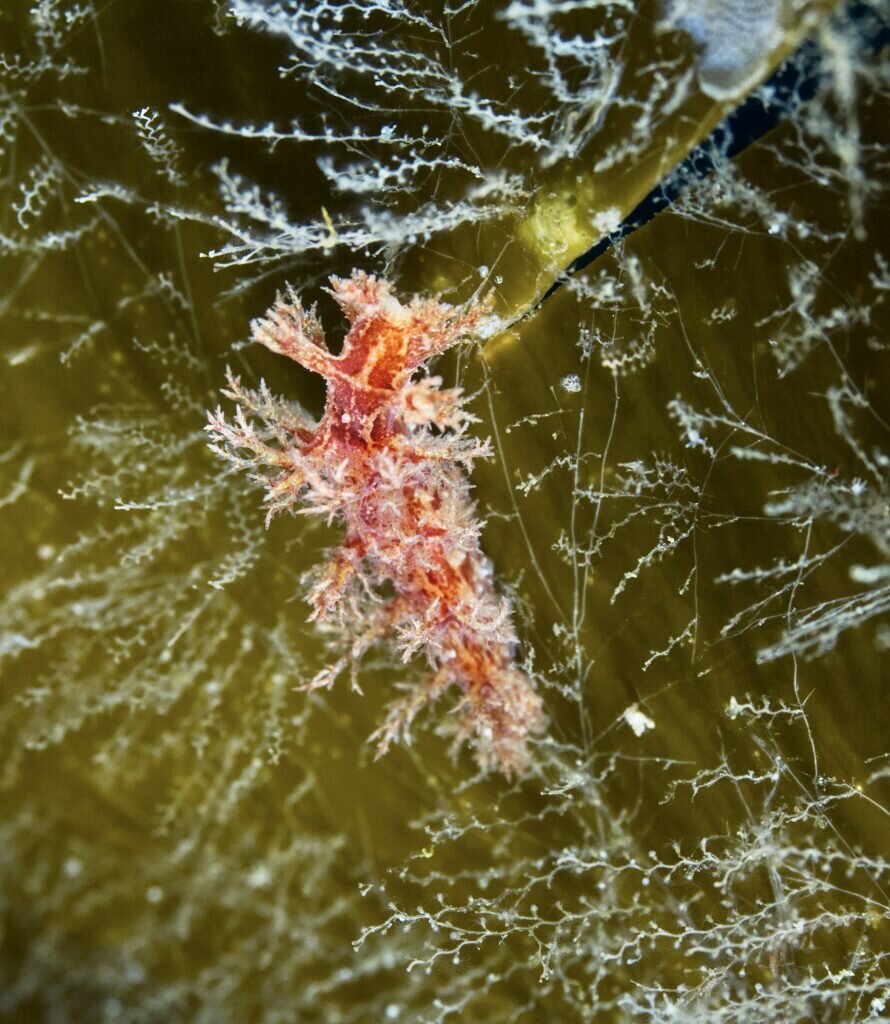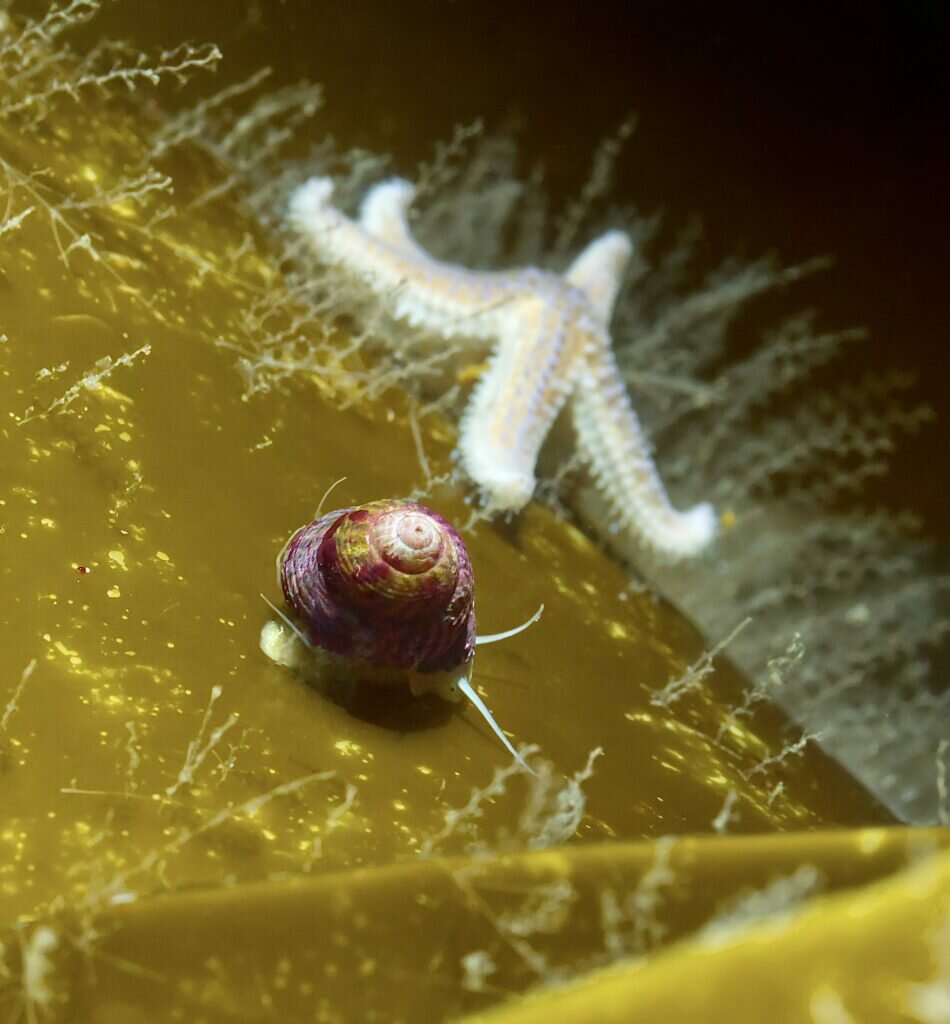Historically, humans have used ocean resources for the development of their civilisations. The ocean seemed to be like the “magician’s hat”, in which we could hide plastic and nuclear waste and get in return endless tuna and salmon, without understanding why or how.
How many times did you flush the toilet to get rid of the famous ear swabs, hoping it would be swallowed by fairies? Unfortunately, things don’t magically appear or disappear in the ocean. Everything comes at a price.
Since the ocean is so vast, so deep and of such immense magnitude, it is still beyond our comprehension. It wasn’t until scientists, divers, and water enthusiasts began delving into its dimensions that we began to get a glimpse of what is happening down there.
As a matter of fact, if you think about the images you have seen of bleached corals and marine animals entangled in fishing nets or eating plastic, these have been captured and shared mainly by divers.
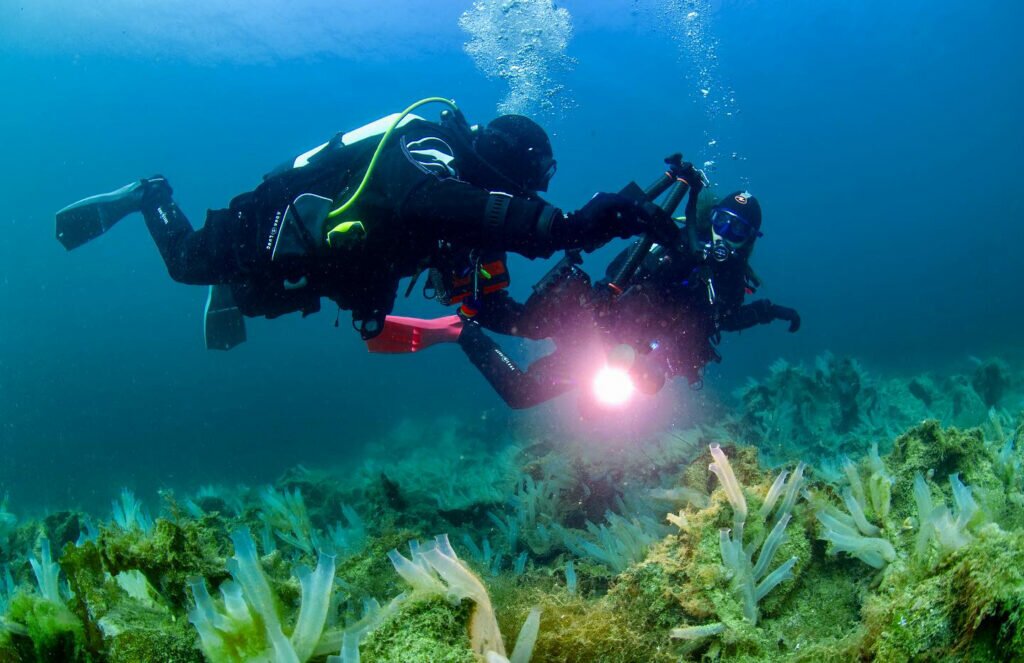
Photo by Ørjand Sandnes
It can be difficult to understand what you cannot see with your own eyes. This often makes us forget that approximately 1 million species inhabit marine ecosystems, which are affected by the way we use and treat the oceans.
In this way, the diving community can contribute to the preservation of marine life and underwater heritage: acting as the eyes of those who cannot go down to experience it themselves. Diving clubs, associations and dive centres are becoming the guardians of the species found in their underwater “backyard”.
Here is an example of the many cases we have come across during the passage of the Sustainable Tour through Norway, where local divers are becoming the voice of their home reefs.
Saltstraumen
Saltstraumen is a small strait with one of the strongest tidal currents in the world. It is located in the municipality of Bodø in Nordland county.
Saltstraumen obtained its protection —as one of the first three marine parks created in Norway— due to its rich marine life, its wild maelstrom and its underwater geology. Just take a look below at what we found diving at the site with NORD&NE.
We were amazed not only by the underwater beauty —which has been constant in all the dive sites we have visited in Norway— but the passion and care that the owners have for the marine life of the place.
NORD&NE have a no hunting policy, none of their guests can hunt when diving. In few places you can swim face to face with large cod, wolffish and halibut. They even collaborate with the universities of Bergen, Trondheim, Tromsø and Bodø to discover and collect data on species.
“We have seen that the fish get used to us where we dive regularly, because a lot of them are stationary. We meet the same fish, dive after dive, for years. And they trust us.” — says Borghild Viem, co-owner.
But if there is any fish that represents this place, it must be the Atlantic wolffish. The viable population that exists today is proof that protection works.
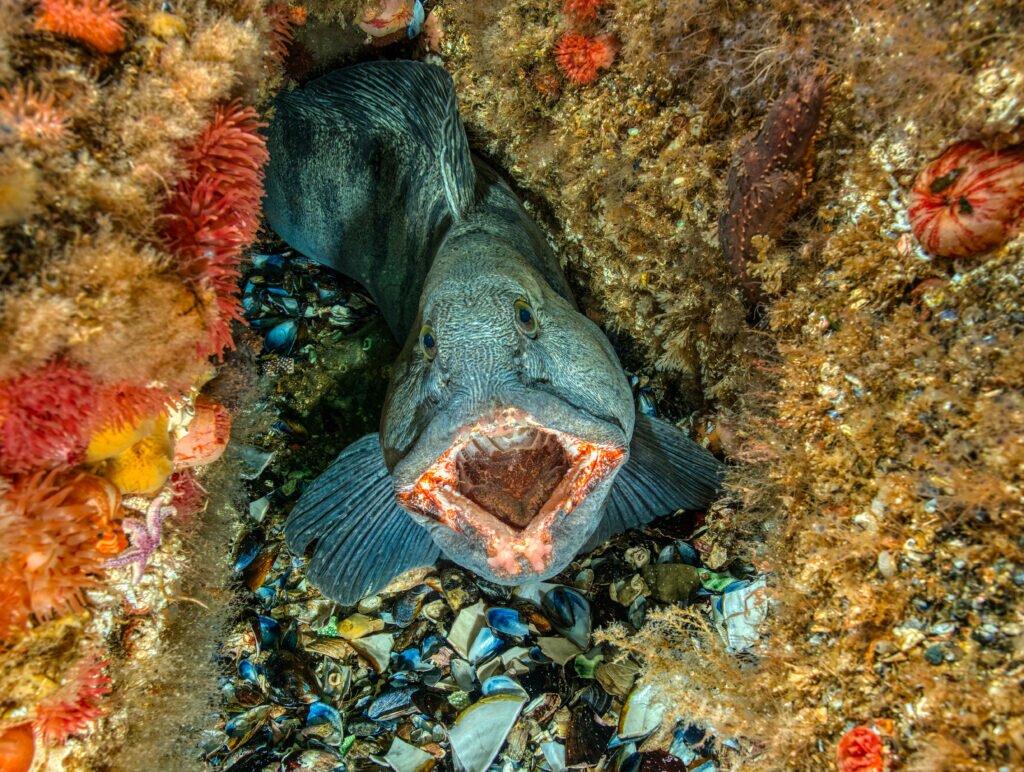
NORD&NE team has even worked over the years on a diary about the wonderful story of a wolffish couple living in the home reef. You can read the sequence on the Marine Park Facebook page. This way you can understand their efforts to protect these stationary species.
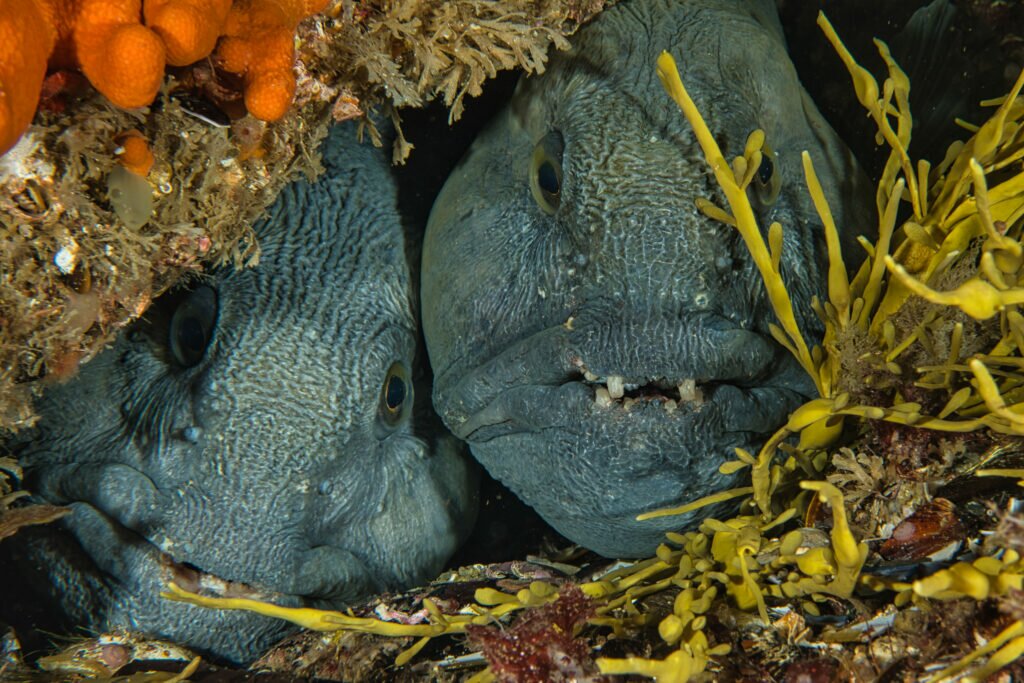
In the 90s, divers used to fill pots and freezers with this delicacy of a fish, without restraint. In Saltstraumen there was an abundance of wolffish to harvest. Suddenly, there was not. An alarmingly short amount of time passed from meeting this friendly grey giant on every dive, to it becoming a rare sight. Local divers agreed on a voluntary conservation of the Atlantic wolffish. After several years, the population began to build up again.
But in recent years, the rise of underwater hunting, mainly by foreign free divers, threatens to destroy this fascinating conservation story. Fish are not afraid of divers due to the trusting relationship that the dive center team has built with them, so they are easy to catch. The fish re-associates divers with danger.
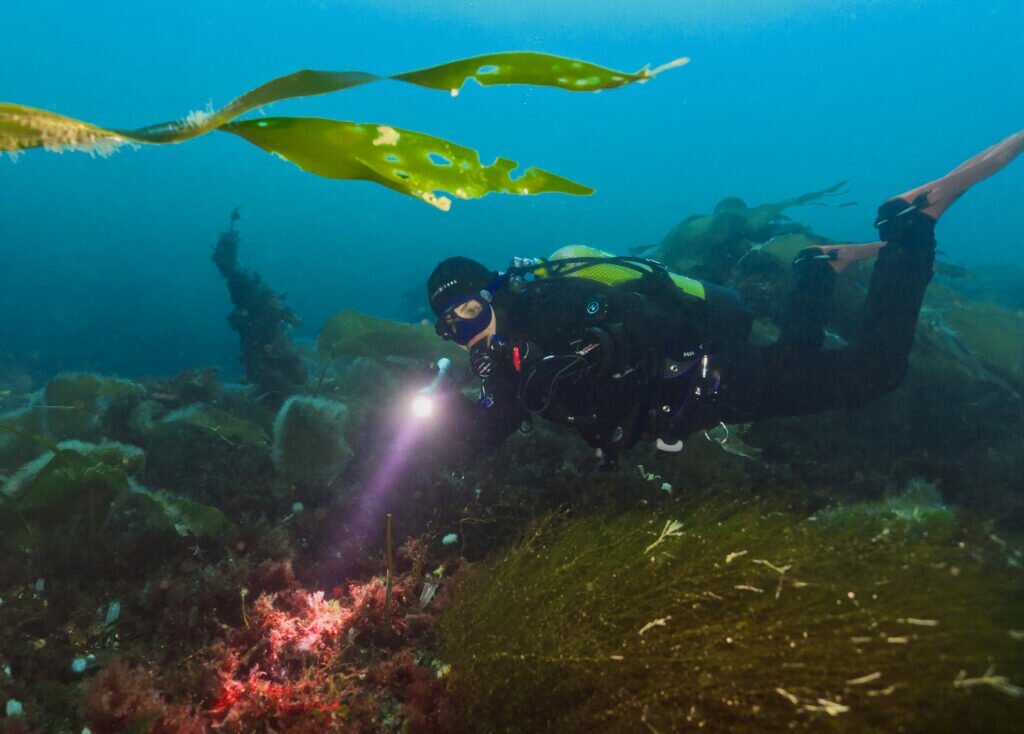
“We have nothing against fishing itself, as the locals have done here since the ice age —catching what they need for dinner, no more. They also eat all the fish, including the small ones, without wasting anything. What drives locals and divers crazy is the “fishing for fun”, simply throwing the whole fish or taking the best and throwing the rest. The worst thing is the slaughter of big fish just for a Instagram photo. And it is terrible to know that divers are allowed to dive down to the wolffish and kill it in its cave, when caring for its eggs. All the local divers leave the wolffish alone in Saltstraumen, but we see more and more spear fishermen from other countries visiting.” — NORD&NE.
We believe in the right of public access to wilderness to obtain food. But at the same time we have the responsibility to take care of the resources that nature offers us, without taking more than we need.
There is neither an official ban against underwater hunting of wolffish, nor on any other fish species in Saltstraumen Marine Park. A call is made to the authorities and political leaders to regulate the fishing and underwater hunting activities that take place in the area, so that it is truly “protected.”
In the meantime, we hope divers and spear-hunters realise the importance of preserving marine life in the area and voluntarily decide to do so before it disappears.
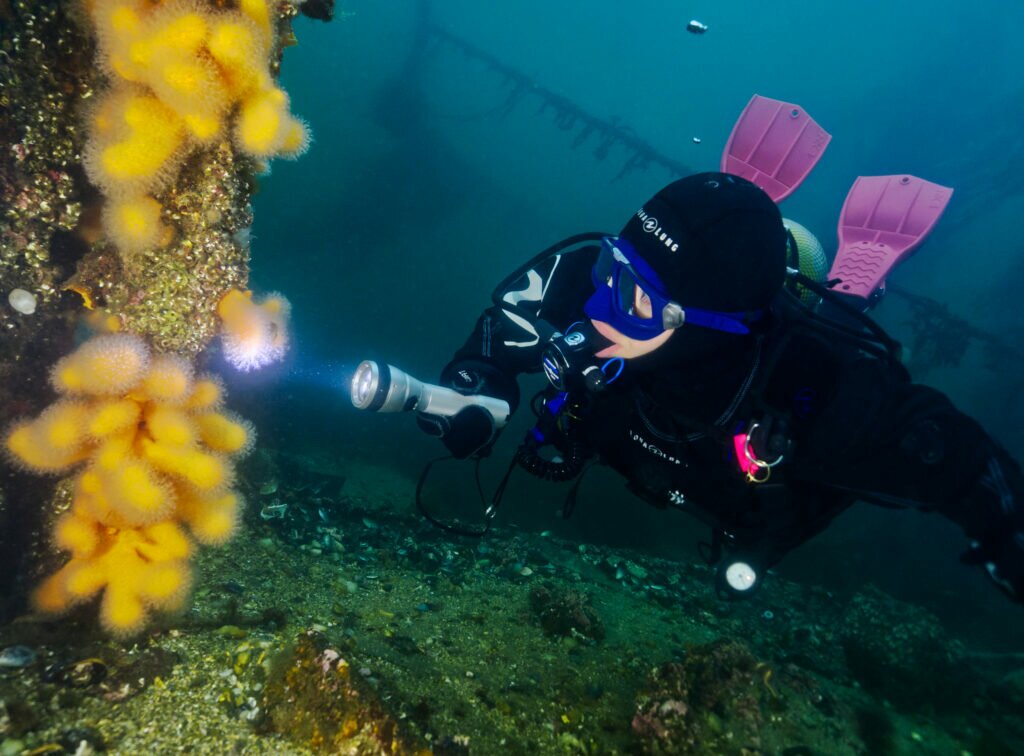
“We love our job, because every time we take a person into the water, there is a chance that they become a little more interested in marine life. We want to be a small dive center, with time to talk with guests, educate them and be a possible agent of change for ocean preservation.”
— NORD&NE team.
>> Do you also have a conservation story on your home reef that you would like to share? Get in touch!

